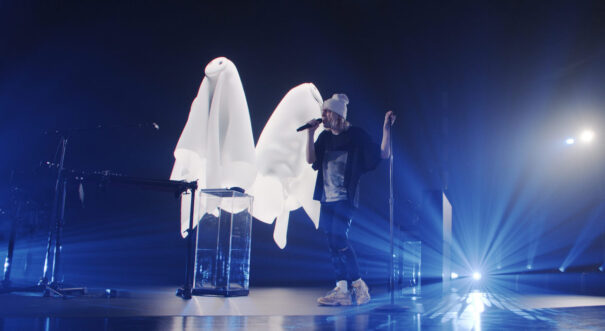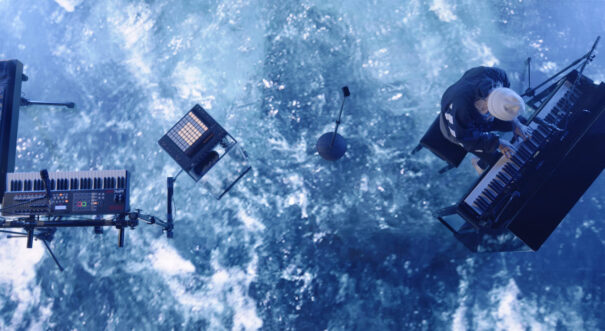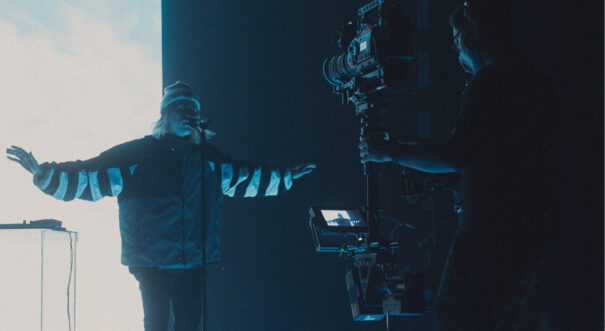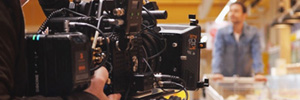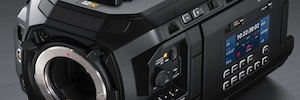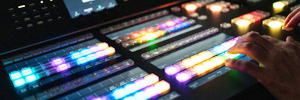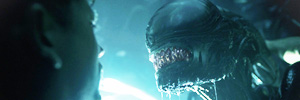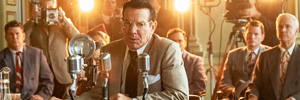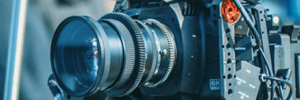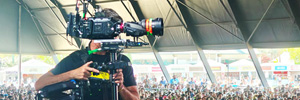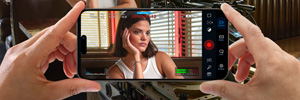Porter Robinson produces his latest concert with VR using Blackmagic cameras
Porter Robinson’s Secret Sky concert was shot using Blackmagic Design Pocket Cinema Camera 6K Pro, Pocket Cinema Camera 6Ks and URSA Mini Pro 4.6K G2.
The hour plus immersive concert, which has been watched by millions around the world, could be viewed in 2D as well as inside a VR world where customers could mingle with avatars of other fans from around the world.
Porter Robinson is an American record producer, musician and singer whose debut studio album was number one on Billboard’s Top Dance/Electronic Albums. To promote his latest album, Nurture, he performed parts of the new album at the Secret Sky Festival, a digital festival aimed at raising money for a variety of charities.
The director and editor for the project, Mike O’Brien, was tasked with giving viewers a feeling that they were at a live show, while also offering a cinematic, digital experience that was beyond what could be seen live. The entire stage was made up of large LED screens, including the stage floor, sides, back and ceiling.
“Our goal was to give the viewer an incredibly immersive experience while capturing all the feelings and emotions that one would experience being at a live show. Fans had the option to enjoy the show inside of a VR world that Porter and his team built. And those with Oculus headsets could experience the set in a powerful, perspective shifting way where they could mingle with other avatars from all over the world while watching the show together. So wild!,” O’Brien said.
To capture the show, O’Brien used four Pocket Cinema Camera 6Ks, a Pocket Cinema Camera 6K Pro and an URSA Mini Pro 4.6K G2. The URSA Mini Pro 4.6K G2 was placed on a Steadicam rig, along with a Pocket Cinema Camera 6K and Pocket Cinema Camera 6K Pro, which were used to move around the stage. The other Pocket Cinema Cameras were placed around the stage or on top on a center lighting truss to allow him to punch down on shots from above.
“This is exactly what we were going for when we planned out the angles. Having a bunch of looks allowed us to cultivate that immersive feeling throughout. It was important for us to capture the ‘fan’s front row perspective,’ so our two camera ops, Jay Kaufman and Gabe Rubiano, were strapped up with 6K’s on shoulder rigs to achieve that free flowing handheld vibe. The jib/center rigged cameras gave us our expansive looks, whereas the Steadicam and handhelds were our more intimate looks.”
“Since there was a beautiful LED video floor, we thought it’d be awesome to get a top-down perspective over Porter. The Pocket 6K allowed us to keep our rigging lightweight and safe while delivering a powerful vantage point. Our gaffer Charles Schaefer did an amazing job rigging the Pocket 6K up there, and we ran run/stop cables to the Pockets to allow us to record and stop through a Tilta Nucleus-M handle, which was a life saver! Since the run/stop used the same port as an SSD would, we utilized a 512GB card to capture the footage,” he continued.
Latitude and color science
O’Brien was faced with capturing the huge number of unique graphics and lighting changes that accompanied each song. Relying on the Blackmagic camera’s latitude and color science, shooting in native ISO 800 and recording in Backmagic RAW 8:1, he was able to get the shots he needed. Also, because he was using DaVinci Resolve Studio for editing and color correction, he knew that he would be able to easily rework any clips that were not ideal when shot in ISO 800.
“Both cameras held up extremely well! The latitude and richness of the colors have always been something I loved about Blackmagic cameras, as well as the brilliance of Gen 5 color and the gamut compression and highlight recovery options,” he said. “Since we couldn’t change the ISO as quickly as the graphics were popping up on screen, the ability to rework the RAW image’s metadata in post was KEY! Certain clips were blown out at 800 but easily recovered in Resolve. I love having that flexibility on projects with fast moving dramatic lighting conditions like this one.”
Color correction and editing
Post production was done by O’Brien using DaVinci Resolve Studio for color correction and editing. Using DaVinci Resolve Studio to go through footage on a 10TB RAID drive, he was able to pull together a rough edit. From there, O’Brien worked with Porter Robinson to dial in the color corrections and final edits.
“This was a team effort, but my job was to combine all the layers of sounds and beautiful colors into one dynamic work of art. This visual is just an extension of Porter’s genius. The video wall graphics were designed by Porter himself, Ghostdad, Shin and a select group of talented digital artists. The lighting designer, Ben Coker, did an incredible job bringing dimension to the set. It was amazing to watch the energy flow from the softer intimate songs to grander epic songs! Such a cool experience,” O’Brien finished.
Cet article vous a plu ?
Abonnez-vous à notre Nourrir Et vous ne manquerez rien.



